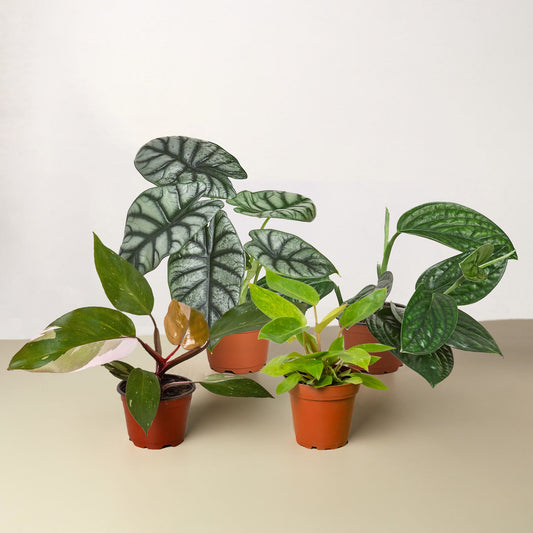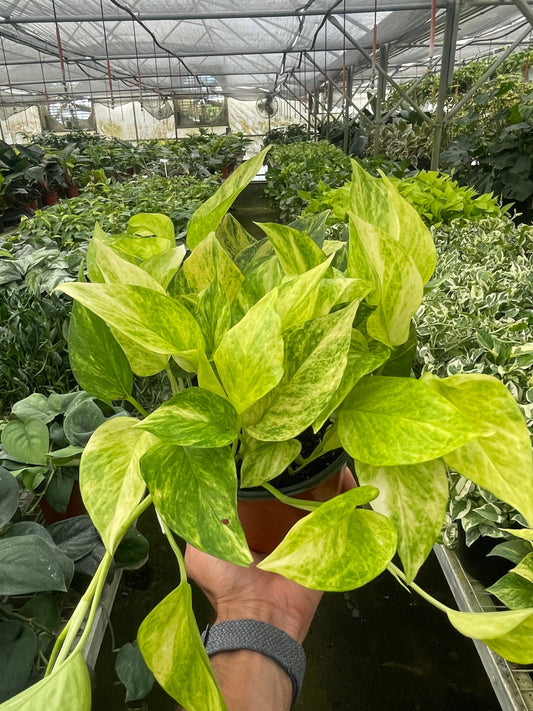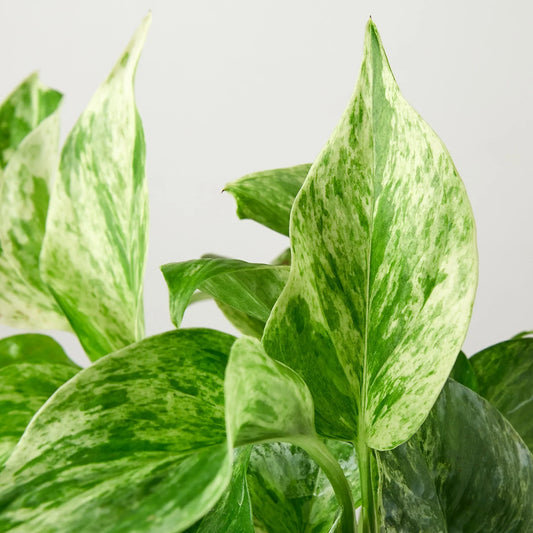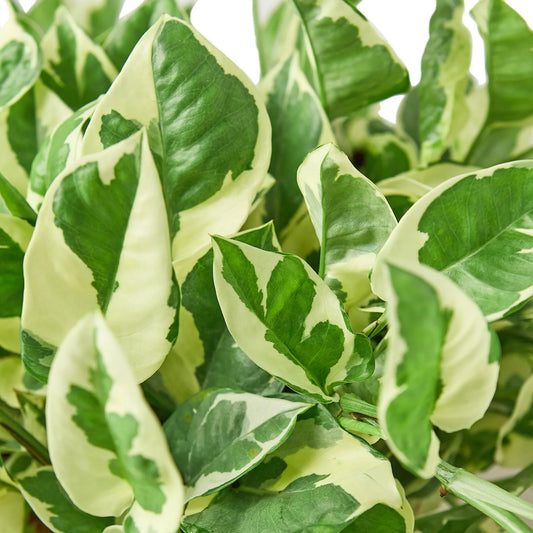Fern Size: How Big Do They Get?
Cafe Planta Team
If you've ever nurtured a love for ferns, you're not alone. These ancient plants have captivated people for centuries with their delicate beauty and versatility. But one question often arises: just how big do ferns get? Whether you're dreaming of a lush indoor jungle or planning the perfect garden escape, understanding fern size is key to achieving your botanical goals.
In this article, we'll explore the growth potential of various ferns, from the petite to the colossal. We'll also cover practical tips on how to care for these leafy companions and share some design ideas to incorporate them into your home. So, grab a cup of tea, get cozy, and let's discover the fascinating world of ferns together.
How Big Can Ferns Really Get?
Ferns, with their diverse shapes and sizes, are like the wild card in your plant collection. But how big can they actually get? The answer depends on the type of fern you're dealing with. Some ferns stay small enough to fit on your windowsill, while others can tower over you in a forest setting. Here's a breakdown:
- Small Ferns: Many indoor ferns, like the Maidenhair Fern (Adiantum), stay compact, usually not exceeding 12-18 inches in height. Perfect for adding a touch of greenery to tight spaces.
- Medium Ferns: Boston Ferns (Nephrolepis exaltata) and similar varieties can grow up to 3 feet tall and wide, making them great for hanging baskets or as floor plants.
- Large Ferns: Outdoor varieties, such as the Ostrich Fern (Matteuccia struthiopteris), can reach impressive heights of 5-6 feet. These are ideal for creating a statement in your garden.
Interestingly enough, some ferns, like the Tree Fern (Dicksonia antarctica), can grow even larger, with their trunks reaching up to 15 feet in height. While these aren't common in typical home gardens, they're a testament to the diverse size range of ferns.
Factors Influencing Fern Growth
Just like with people, a fern's size isn't solely determined by its genetic potential. Environmental factors play a significant role in how big your fern will get. Here are some key influences:
- Light: Most ferns thrive in indirect sunlight. Too much direct light can scorch their leaves, while too little can stunt their growth. Find that sweet spot for optimal growth.
- Water: Ferns love moisture but aren't fans of soggy roots. Keeping the soil consistently damp but not waterlogged is ideal. Using a humidifier or a pebble tray can also help maintain the humidity levels they crave.
- Temperature: Most ferns prefer temperatures between 60-75°F. Extremes in temperature can severely impact their growth.
- Nutrients: Regular feeding with a balanced, water-soluble fertilizer during the growing season can support healthy development.
By paying attention to these factors, you can help your ferns reach their full size potential. After all, a happy fern is a growing fern!
Popular Fern Varieties and Their Typical Sizes
If you're considering adding a fern to your collection, it's helpful to know which varieties you might encounter and their typical growth sizes. Here are a few popular choices:
Maidenhair Fern (Adiantum)
The Maidenhair Fern is beloved for its delicate leaf structure and graceful appearance. Typically, these ferns stay on the smaller side, with most varieties growing to about 12-18 inches. They're perfect for tabletops or shelves where space is limited.
Boston Fern (Nephrolepis exaltata)
A classic choice for hanging baskets, the Boston Fern can grow up to 3 feet tall and just as wide. Its lush, arching fronds make it a favorite for adding a touch of green to any room.
Staghorn Fern (Platycerium)
These unique ferns can grow quite large, often measuring up to 3 feet tall and wide. They're known for their antler-like leaves and are frequently mounted on boards or hung on walls as living art.
Ostrich Fern (Matteuccia struthiopteris)
This outdoor fern can reach an impressive height of 5-6 feet, making it a striking addition to any garden. Its feathery fronds create a lush, tropical feel.
Choosing the right fern for your space involves considering the size and growth habits of each variety. Whether you want a small accent plant or a large focal point, there's a fern out there for you.
Caring for Your Fern: Tips for Optimal Growth
Once you've chosen your fern, the next step is to make sure it thrives in its new environment. Here are some essential care tips to keep your fern healthy and growing:
- Watering: Ferns like consistent moisture, but be careful not to overwater. Use your finger to check the top inch of soil; if it feels dry, it's time to water.
- Humidity: Most ferns prefer high humidity levels. If you live in a dry climate, consider using a humidifier or placing a tray of water near your plants.
- Feeding: During the growing season, feed your fern every 4-6 weeks with a diluted liquid fertilizer.
- Pruning: Remove any dead or discolored leaves to encourage new growth and maintain the plant's appearance.
Following these basic care guidelines will help your fern not only survive but thrive, rewarding you with lush growth and vibrant foliage.
Design Ideas: Incorporating Ferns into Your Home
Ferns are incredibly versatile and can fit into almost any decor style. Whether you're looking to create a minimalist space or a bohemian jungle, here are some ideas to inspire you:
- Hanging Gardens: Use macramé hangers to display Boston ferns in front of windows, adding vertical interest to your room.
- Terrariums: Small ferns like Maidenhair can thrive in closed terrariums, creating a miniature ecosystem that adds a touch of nature to any surface.
- Wall Art: Mount Staghorn ferns on wooden plaques to create unique, living art pieces for your walls.
- Bathroom Oasis: Place ferns in your bathroom where the humidity from showers can help them flourish. The natural green will add a spa-like feel to your space.
With a little creativity, ferns can become a stunning feature in your home, offering both beauty and tranquility.
Common Challenges and How to Overcome Them
While ferns can be relatively easygoing, they do have their share of challenges. Here are some common issues and how to address them:
Brown Leaf Tips
Brown tips often indicate low humidity or inconsistent watering. Increasing humidity with a humidifier or misting can help, along with ensuring regular watering.
Yellowing Leaves
This can be a sign of overwatering or poor drainage. Make sure your pot has adequate drainage holes and adjust your watering schedule accordingly.
Pests
Ferns can attract pests like aphids and scale insects. Wipe leaves with a damp cloth and use insecticidal soap to keep pests at bay.
By staying vigilant and addressing issues promptly, you can keep your ferns healthy and thriving.
Fern Propagation: Expanding Your Collection
If you're looking to grow your fern family, propagation is a fun and rewarding process. Here's a simple method to get started:
- Division: Many ferns can be propagated by division. Carefully remove the plant from its pot and gently separate the root ball into smaller sections, ensuring each section has roots and leaves.
- Replanting: Plant each division in its own pot with fresh potting soil. Water thoroughly and place in a humid environment to encourage root development.
This method is not only cost-effective but also allows you to share your love of ferns with friends and family.
Choosing the Right Pot for Your Fern
The pot you choose for your fern can make a big difference in its health and growth. Here are some things to keep in mind:
- Size: Choose a pot that's slightly larger than your fern's current root ball. Too much extra space can lead to overwatering issues.
- Material: Pots made of materials like terracotta can help regulate moisture levels, thanks to their porous nature.
- Drainage: Ensure your pot has adequate drainage holes to prevent waterlogging.
With the right pot, your fern will have the room to grow and thrive, while also complementing your home's decor.
Final Thoughts
Ferns are a diverse and captivating group of plants, capable of fitting into any home or garden setting. By understanding their growth potential and needs, you can enjoy lush, healthy ferns in your space.
At Cafe Planta, we believe in the power of plants to bring people together. Whether you're a seasoned plant parent or new to the world of greenery, we're here to help you grow. Check out our selection of plants, accessories, and more, and feel free to reach out via email or Instagram if you have any questions. We're excited to share this journey with you, one leaf at a time!



















